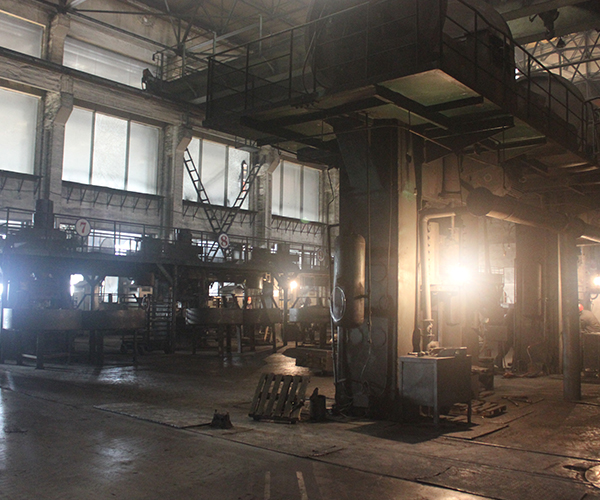Contact: Manager Qu
Phone: +86 15330915520
Contact: Manager Liu
Phone: +86 13464791403
Address: Dashiqiao City, Liaoning Province
Some countries have used alumina instead of Liaoning magnesia chrome brick chromite to produce thermal shock stable MgO·Al2O3 (Al2O330%~40%MgO60%~70%). But bricks containing chromium spinel have strong slag resistance, because the solubility of chromium spinel in silicate melt is lower than that of aluminum spinel. Initially, Radex was tried at the ASEA-SKF150t steel tank slag line where the temperature fluctuated sharply. -DB605 brick, the service life is only 8 times. In order to extend the life of the ASEA-SKF steel tank slag line (especially the part closest to the electrode), fused cast magnesia chrome bricks have been tried.
The fused cast magnesia chrome brick represented by "corhart104" is made of mixed raw materials of 55% magnesia and 45% chromite by casting in an electric arc furnace at 2500℃ eutectic melt, after releasing thermal stress, and finally cutting and grinding with diamond Processing. The phase composition of this fused-cast magnesia chrome brick: periclase and its solid solution 50%, spinel 39%, silicate no more than 10%; compact structure (total porosity <12.0%), compressive strength up to 140 ~165MPa, the temperature of 5% deformation at a load of 0.18MPa is as high as 2050℃, but the thermal shock stability is poor and the price is expensive, it is replaced by high-quality recombined magnesia-chrome bricks

Dolomite bricks are made of dolomite sand that is calcined from natural dolomite. Dolomite brick contains w (CaO) ≥ 40%, w (MgO) ≥ 35%, and also contains a small amount of SiO2, Al2O3, Fe2O3 and other impurities. If the mass ratio of CaO to MgO in the brick is less than 1.39, it is called magnesia dolomite brick.
In order to improve thermal shock resistance, ZrO2+ dolomite bricks and ZrO2+ magnesia dolomite bricks have been developed. Dolomite bricks are mainly used in stainless steel refining furnaces (AODVOD furnaces, etc.) and cement kiln firing zones.
For example, in the AOD furnace lining, currently, Germany uses fired dolomite bricks, some other European countries use pure dolomite bricks, and Japan uses magnesia dolomite bricks. In addition, dolomite brick is the most commonly used refractory material in cement kiln firing zones in Europe and the United States. Among them, 86% of cement kiln firing zones in the United States use this product. However, dolomite bricks tend to absorb moisture and hydrate during transportation, storage and shutdown of the kiln, and have poor thermal shock resistance. They are generally used in kilns with an annual operating rate of over 80%. Only a few manufacturers in my country use cement rotary kilns. Use imported dolomite bricks.
In the field of cement industry, for some reason, some enterprises in our country still use magnesia-chrome bricks in the firing zone and transition zone of cement rotary kilns, while dolomite bricks have excellent high temperature resistance, kiln-hanging skin and resistance to alkaline substances. It can be used in the burning zone and transition zone of cement kilns to replace magnesia-chromium refractory bricks. At present, only a few manufacturers in my country use imported dolomite bricks in cement rotary kilns. Dolomite bricks and magnesia-chrome bricks are fired in cement rotary kilns in my country. There is a lot of room for development in tape applications. However, dolomite refractories are difficult to sinter. At the same time, refractories using dolomite sand as raw materials can easily absorb water and hydrate to form hydroxides during storage and repeated use, resulting in volume expansion, resulting in product cracking and powdering. Acute weaknesses limit the application and development of dolomite refractories.
In the second stage (1990s), with the continuous deepening of reform and opening up, in order to meet the objective needs of the gradual improvement of the socialist market economic system, the optimization and upgrading of the industrial structure of my country's refractory industry also showed a good momentum of development.
In the 1990s, in order to speed up the pace of industrial restructuring, Luoyang Refractories Factory, Deyang Refractories Corporation, Qingdao Refractories Factory, Taihu Refractories Company and other companies have joined forces with Hong Kong, China, Taiwan, Germany, and Southeast Asia. Manufacturers from other countries and regions set up joint ventures to jointly develop new products; 6 refractory factories (mines) in Shandong integrated to form Shandong Refractory Raw Materials Company, Shanghai Refractory Factory and Shanghai Second Refractory Factory merged to form Shanghai Taishan Refractory Co., Ltd., Qinhuangdao Refractory Factory broke industry boundaries and integrated with the city's float glass company.
In order to optimize the organizational structure, the refractory plants that belonged to the secondary units of large iron and steel enterprises such as Anshan Iron and Steel, Taiyuan Iron and Steel, Wuhan Iron and Steel, Daye, Chongqing Iron and Steel, Baotou Iron and Steel, Panzhihua Iron and Steel, Benxi Iron and Steel, Xiangshan Iron and Steel, Tangshan Iron and Steel were successively separated from the main body. Established a refractory company with relatively independent status in production and operation and with legal person (entrusted) qualifications. In particular, it should be pointed out that during this period, private refractory companies in areas such as Henan, Liaoning, Shandong, Shanxi, Jiangsu, and Zhejiang have sprung up. They have responded to the wave of reform and development and seized business opportunities. Especially the market demand for the continuous development of the iron and steel industry, investment and construction of factories, the introduction of advanced technology and equipment, and rapid development with flexible operating mechanisms and strong strength.
The reorganization and integration of state-owned enterprises and the rapid development of private enterprises have promoted the optimization and upgrading of the refractory industry structure, and promoted the smooth transition of the industry from simple reproduction to expanded reproduction.